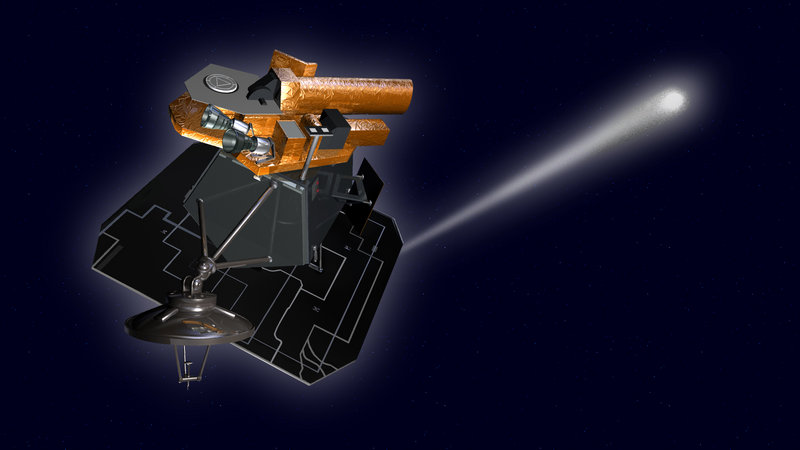LOS ANGELES — On Thursday at 7:01 a.m., a Jet Propulsion Laboratory probe will sweep within 434 miles of comet Hartley 2 and take its picture, only the fifth time a spacecraft will have photographed a comet up close.
Each of those previous encounters has surprised scientists, painting a diverse picture of the makeup of comets, which were once thought to be little more than dirty snowballs. Hartley 2 has already startled researchers by spewing cyanide for eight days in early October.
Such outgassing events are usually violent and accompanied by massive amounts of dust, but this one was not, said astronomer Mike A’Hearn of the University of Maryland, principal investigator for the mission. “Hartley 2 has already put on a great show,” he said, “and we expect more of the unexpected during (the) encounter.”
The spacecraft is Deep Impact, which launched an 820-pound copper impactor into the core of comet Tempel 1 on the Fourth of July in 2005, revealing that object to be less of a dirty snowball and more of a snowy dirt ball made mostly of dust.
That impact was supposed to be the end of the $333 million mission, but NASA officials gave JPL controllers permission to aim the probe at another comet. The team settled on Hartley 2, discovered 24 years ago by British astronomer Malcolm Hartley while he was working at the Schmidt Telescope in Australia. Hartley 2 orbits the sun every 6.46 years.
On Oct. 20, Hartley 2 passed within 11 million miles of the Earth and was faintly visible to the naked eye. It made its closest approach to the sun last Thursday. It can still be seen with a telescope or binoculars. It will appear early in the morning today and Thursday, passing in front of the feet of the constellation Gemini.
The new mission, which cost about $30 million, was dubbed Deep Impact Extended Investigation, or DIXI. During its five-year voyage, the probe has trained its camera on distant stars, searching for exoplanets for a project called Extrasolar Planet Observation and Characterization, or EPOCh. Combining the two acronyms, the mission is now known as EPOXI.
The probe was designed to photograph Tempel 1 and simultaneously send those images back to Earth, but the orbital characteristics of Hartley 2 make that impossible. Instead, for the past week, the craft has been alternately photographing the comet, then swinging its antenna back toward Earth to transmit the data. As the probe gets close, it will have to store all its data until the encounter is over before sending the images to scientists.
The encounter can be monitored live at www.ustream.tv/user/nasajpl2.
Send questions/comments to the editors.



Success. Please wait for the page to reload. If the page does not reload within 5 seconds, please refresh the page.
Enter your email and password to access comments.
Hi, to comment on stories you must . This profile is in addition to your subscription and website login.
Already have a commenting profile? .
Invalid username/password.
Please check your email to confirm and complete your registration.
Only subscribers are eligible to post comments. Please subscribe or login first for digital access. Here’s why.
Use the form below to reset your password. When you've submitted your account email, we will send an email with a reset code.